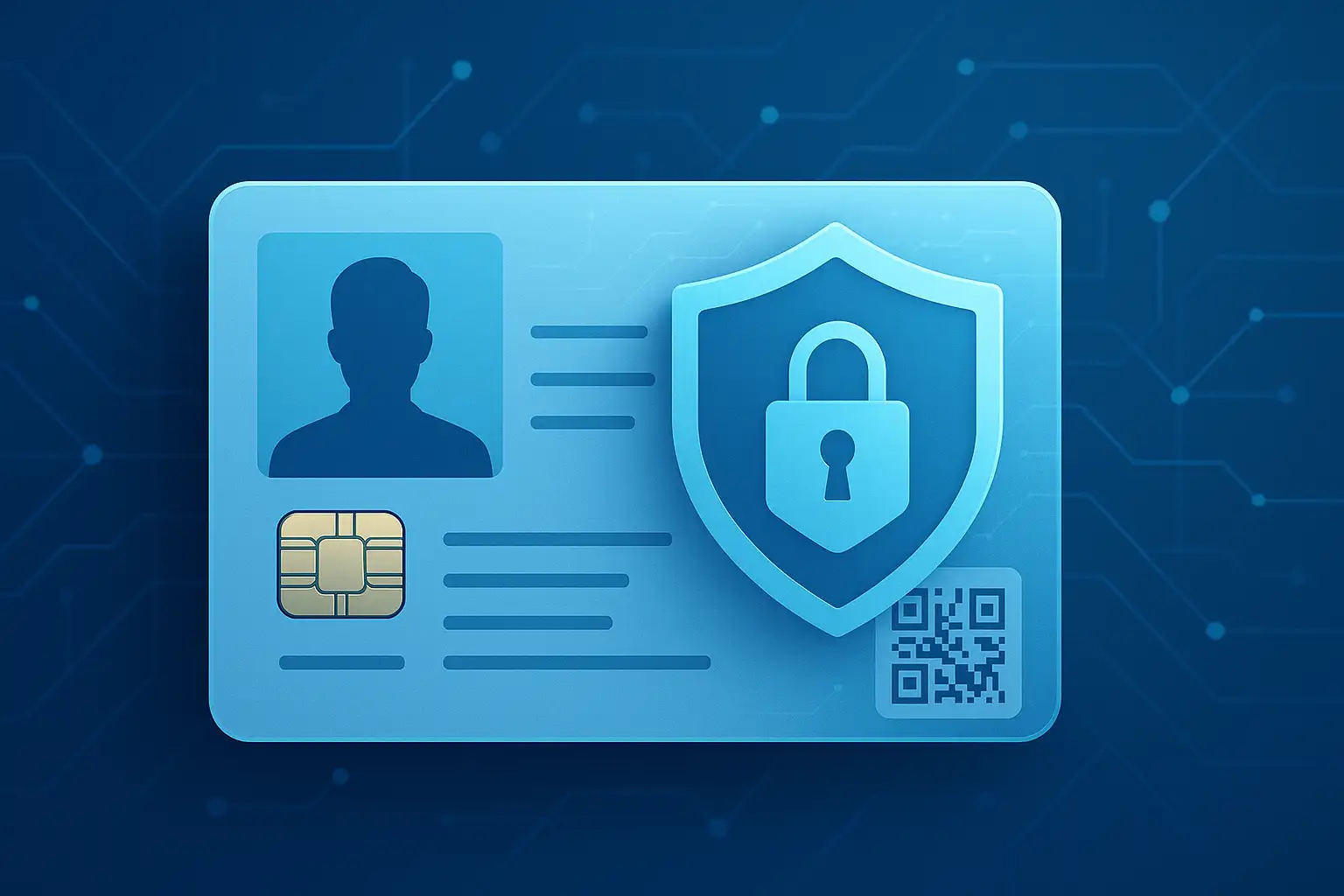Video surveillance laws in 2025 are increasingly complex, navigating the intricate balance between security, privacy, and technological advancements. This guide provides an in-depth look at the legal landscape across Europe and the United States, offering essential insights for individuals and businesses managing surveillance systems, exploring remote monitoring solutions, or utilizing privacy-enhancing tools like BlurMe AI face blur technology.
Understanding the Global Legal Landscape of Video Surveillance in 2025
The regulatory framework for video surveillance differs significantly between continents and even within individual nations/states. The core principles, however, revolve around the lawful basis for processing personal data, proportionality, transparency, and data subject rights.
I. European Union (EU) Video Surveillance Laws: The Reign of GDPR
The General Data Protection Regulation (GDPR) (Regulation (EU) 2016/679) is the cornerstone of data protection in the EU, and it profoundly impacts video surveillance. Under GDPR, video footage that allows for the identification of individuals is considered "personal data."
- Lawful Basis for Processing: Before deploying surveillance, a data controller (the entity determining the purpose and means of processing personal data) must identify a lawful basis. Common bases include:
- Legitimate Interests: Often cited for security purposes, but it requires a careful balancing act against individuals' fundamental rights and freedoms. The surveillance must be necessary and proportionate to the legitimate interest pursued.
- Consent: Rarely a practical basis for widespread surveillance due to the difficulty of obtaining free, specific, informed, and unambiguous consent from everyone captured on camera.
- Legal Obligation: If surveillance is mandated by specific national law.
- Key GDPR Principles Applied to Video Surveillance:
- Purpose Limitation: Cameras must be installed for specific, explicit, and legitimate purposes (e.g., crime prevention, property protection) and not be processed further in a manner incompatible with those purposes.
- Data Minimisation: Only necessary and relevant footage should be collected. Extensive, disproportionate surveillance (e.g., cameras in private offices unless strictly justified) is generally not permitted.
- Transparency: Individuals must be informed about the surveillance. This typically requires clear, prominent signage at the entrance to monitored areas, including:
- The fact of surveillance.
- The identity of the data controller.
- The purpose of the surveillance.
- Information on how to exercise data subject rights (e.g., access, erasure).
- A link to a more detailed privacy notice.
- Storage Limitation: Footage should not be kept longer than necessary for its intended purpose. Common retention periods range from 24 hours to 30 days, depending on the risk assessment and specific justification.
- Data Subject Rights: Individuals have rights including:
- Right of Access: To request copies of their personal data (footage).
- Right to Erasure ("Right to be Forgotten"): To request deletion of footage, though this is often balanced against other legitimate interests (e.g., ongoing investigations).
- Right to Restriction of Processing: To limit how their data is used.
- Audio Recording: Generally, audio recording alongside video is considered highly intrusive under GDPR and is very difficult to justify unless there is a specific and compelling legal basis, or explicit, informed consent for each individual.
- Cross-Border Data Transfers: If footage is transferred outside the EU/EEA (e.g., to a remote monitoring center in a third country), appropriate safeguards (e.g., Standard Contractual Clauses) are required.
II. United States Video Surveillance Laws: A Patchwork of Federal and State Regulations
The U.S. lacks a single, overarching federal privacy law akin to GDPR. Instead, video surveillance is governed by a combination of federal and state statutes, case law, and sometimes local ordinances. The concept of a "reasonable expectation of privacy" is central to many rulings.
- Federal Laws:
- Fourth Amendment: Protects individuals from unreasonable searches and seizures by the government, often applied to public surveillance by law enforcement. However, this generally doesn't apply to private entities.
- Electronic Communications Privacy Act (ECPA) of 1986: Primarily addresses wiretapping and electronic communication interception. It prohibits the intentional recording of oral communications without the consent of at least one party, or in some states, all parties. This is crucial for audio recording.
- State Laws: The "Reasonable Expectation of Privacy"
- Public vs. Private Property: Generally, there is no reasonable expectation of privacy in truly public spaces (e.g., public sidewalks, parks). However, this changes in semi-private or private areas.
- Business Security Camera Laws:
- No Expectation of Privacy in Workplaces (Generally): Employers can typically monitor common work areas where there is no reasonable expectation of privacy.
- Forbidden Areas: Cameras are almost universally prohibited in areas where employees have a high expectation of privacy, such as restrooms, locker rooms, changing areas, or break rooms.
- Notice: While not federally mandated for video, many states require businesses to post signage notifying employees and visitors of surveillance. Some states also require employee consent, especially if the surveillance is covert or impacts collective bargaining agreements.
- Audio Recording: This is where ECPA and state wiretapping laws come into play. States are either "one-party consent" or "all-party consent" states for recording conversations.
- One-Party Consent States: Allow recording if at least one person involved in the conversation consents (which can be the recorder themselves). The majority of U.S. states are one-party consent.
- All-Party Consent States: Require the consent of every party to a conversation to legally record it. Currently, these include California, Delaware, Florida, Illinois, Maryland, Massachusetts, Montana, New Hampshire, Nevada, Oregon, Pennsylvania, Vermont, and Washington. Recording audio without consent in these states is a felony.
- Home Security Camera Laws:
- Private Property: Homeowners can generally place cameras on their own property to monitor their homes and yards.
- Neighboring Property/Public Spaces: Cameras pointing into a neighbor's private property (e.g., their bedroom window, backyard) could lead to civil lawsuits for invasion of privacy. Recording public spaces like sidewalks or streets is usually permissible as there's no reasonable expectation of privacy there, but local ordinances might impose specific restrictions on placement or duration.
- Expectation of Privacy in the Home: Recording inside one's own home is generally permissible, but specific rules apply if visitors, domestic employees, or tenants are present. Hidden cameras used to record individuals in areas where they have a reasonable expectation of privacy (e.g., a guest bathroom) can be illegal.
- Surveillance Cameras in Public Places (U.S.):
- Generally fewer restrictions, but still subject to the "reasonable expectation of privacy." For example, hidden cameras in public restrooms or changing facilities are illegal.
- Law enforcement use of surveillance in public spaces is subject to constitutional limitations, but private entities have broader leeway, provided they don't violate state specific wiretapping or privacy tort laws.
III. Requesting and Obtaining Surveillance Footage: Your Rights

Accessing surveillance footage depends heavily on the jurisdiction and the nature of the request.
- EU (Under GDPR):
- Right of Access: Individuals have a strong right to request access to footage containing their personal data. Businesses are obligated to respond within one month (with potential extensions). They must provide a copy of the footage, but often this will involve redacting (blurring) other identifiable individuals to protect their privacy.
- Legal Proceedings: Law enforcement or legal bodies can request footage for investigations, often without needing data subject consent, based on legal obligations.
- United States:
- Private Businesses: Businesses are generally not legally obligated to provide footage to individuals unless a court order (subpoena) or specific state law requires it. They often comply voluntarily for insurance or customer service reasons, but this is at their discretion.
- Subpoenas: For legal cases (civil or criminal), a subpoena duces tecum is the formal legal process to compel a business or entity to produce surveillance video for CCTV redaction.
- Law Enforcement: Police can often request footage as part of an investigation, and businesses frequently cooperate.
- FOIA Requests: For footage from government agencies (e.g., city cameras), Freedom of Information Act (FOIA) requests (federal) or state-level public records acts can be used, though redactions for privacy are common.
- Legal Limitations: Sensitive Data Protection
- GDPR: Explicitly protects sensitive personal data (e.g., health, racial origin, religious beliefs). If surveillance footage inadvertently captures such data, its processing is subject to stricter rules.
- FERPA (Family Educational Rights and Privacy Act - U.S.): Protects the privacy of student education records. Footage from school cameras containing identifiable student information could fall under FERPA and limit disclosure.
- HIPAA (Health Insurance Portability and Accountability Act - U.S.): Protects patient health information. Surveillance in healthcare settings must comply with HIPAA regulations.
IV. Protecting Privacy with Face Blur and Video Redaction Tools in 2025
With increased scrutiny on data privacy, tools for anonymization and redaction are becoming indispensable.
- AI Face Blur Tools:
- Platforms like BlurMe utilize AI to automatically detect and blur or pixelate faces in video footage. This is critical for:
- GDPR Compliance: When sharing footage for legitimate purposes (e.g., evidence) while protecting the privacy of bystanders.
- Public Records Requests: Fulfilling FOIA or GDPR access requests while redacting third-party identities.
- Ethical Use: Maintaining privacy even when not legally mandated.
- How to Blur a Face in a Video with BlurMe (Example):
- Step 1: Upload your video to BlurMe’s online platform.
- Platforms like BlurMe utilize AI to automatically detect and blur or pixelate faces in video footage. This is critical for:
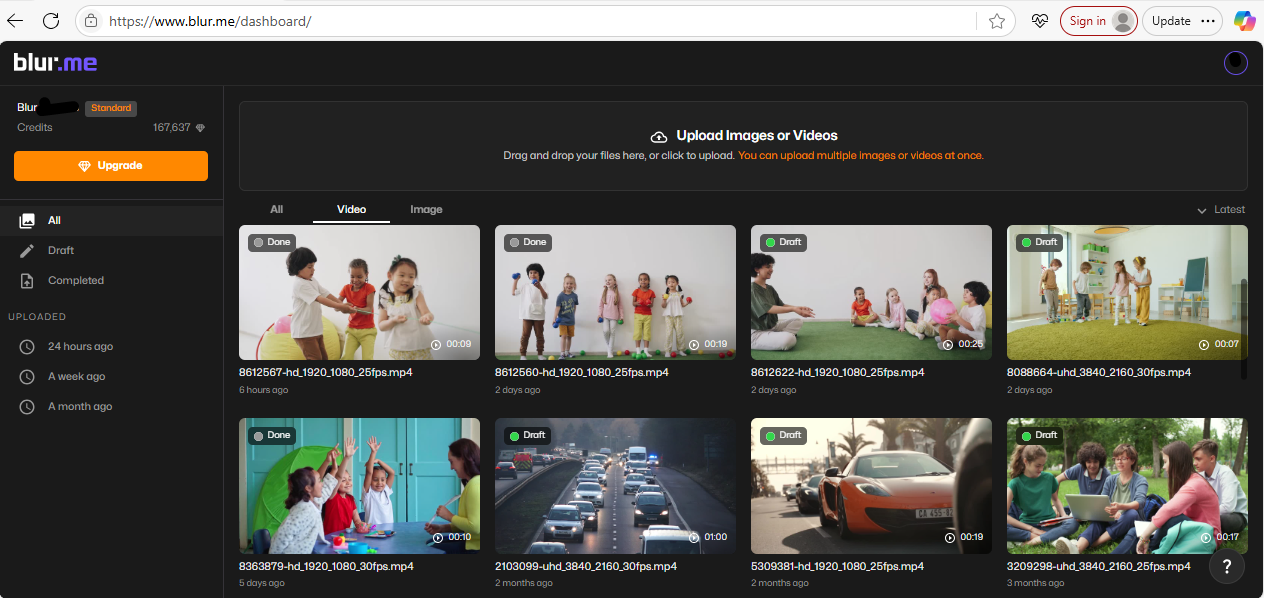
- Step 2: Select the AI Face Blur option for automatic face blurring.
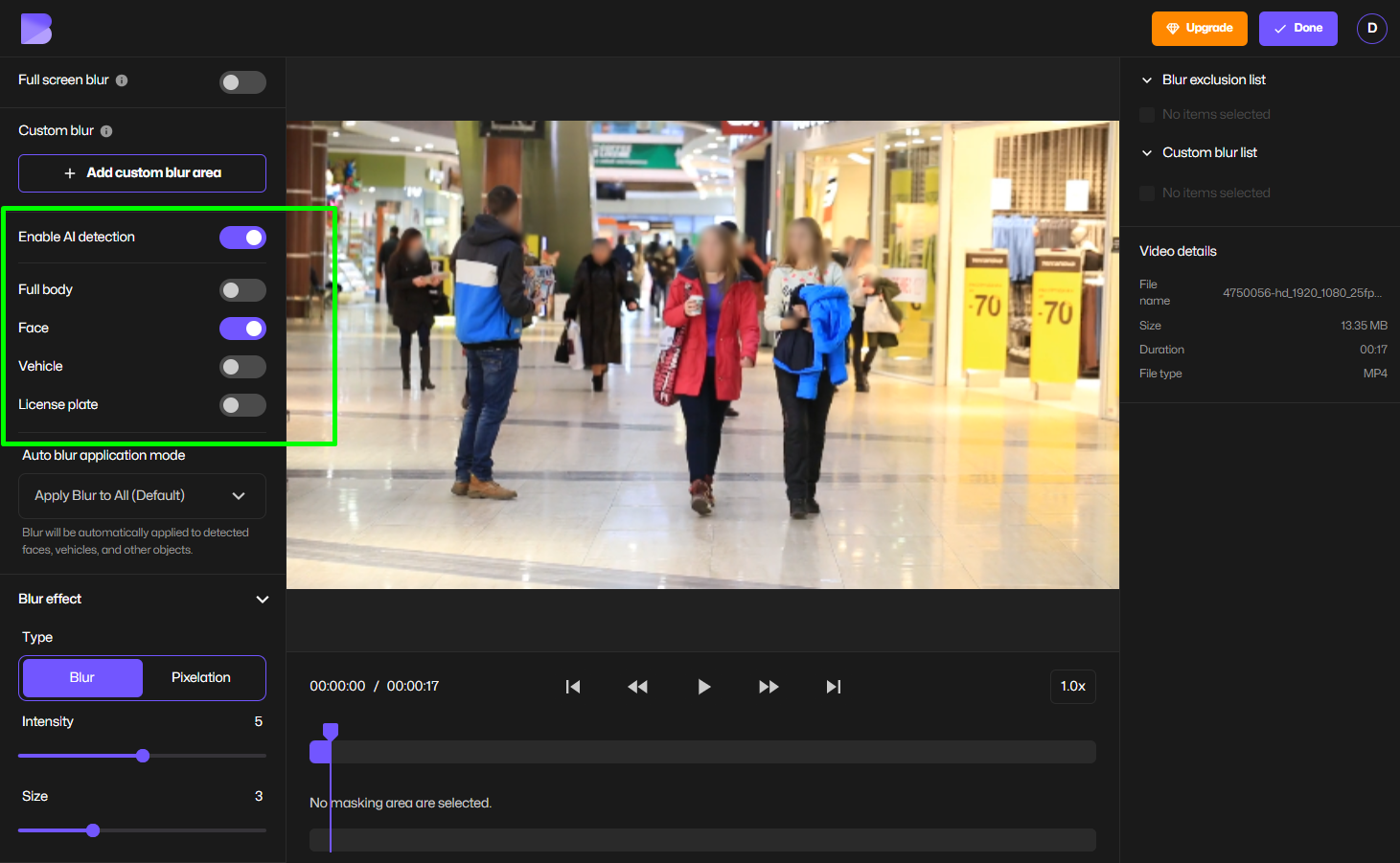
- Step 3: Adjust settings for blur intensity, tracking moving faces, or applying a face censor effect.
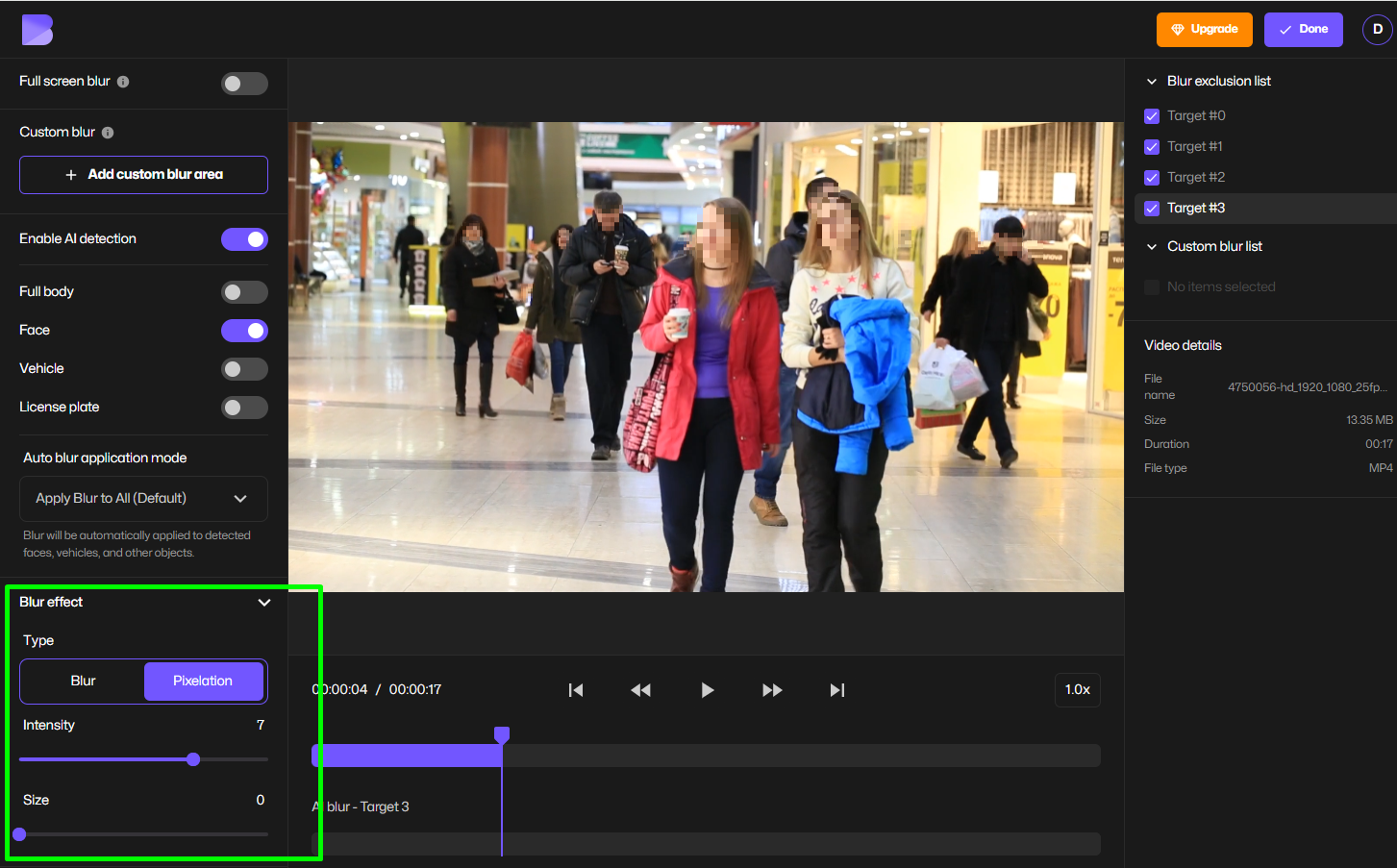
- Step 4: Download or share your anonymized footage safely.
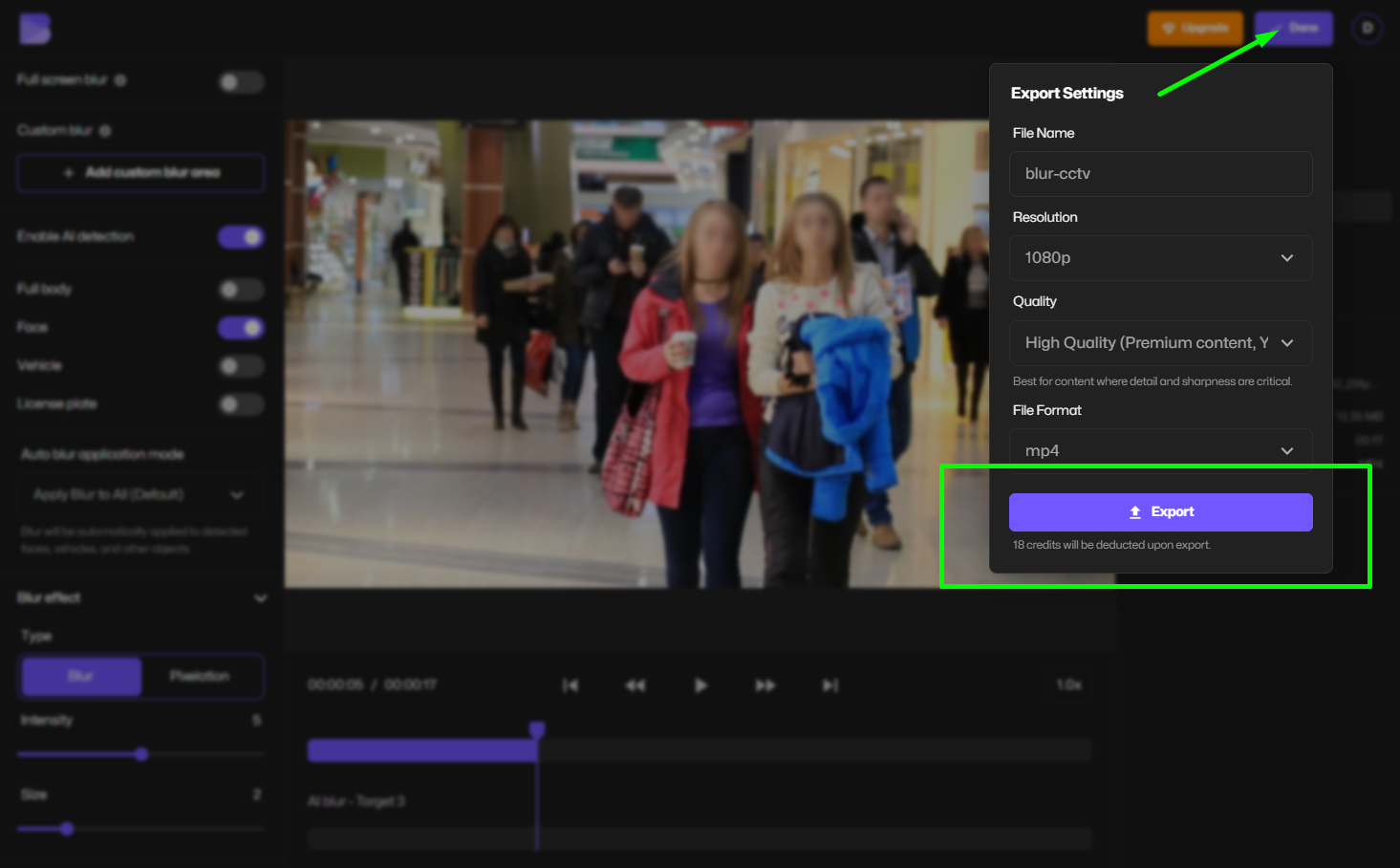
- Video Redaction Software:
- Beyond faces, advanced video redaction software allows for the blurring or masking of other sensitive information (e.g., license plates, documents, screen content, specific objects) in video. This is essential for:
- Redaction Software: For law enforcement evidence or public safety initiatives.
- Legal Discovery: Ensuring compliance during legal proceedings.
- Employee Privacy Protection: When reviewing workplace surveillance.
- Beyond faces, advanced video redaction software allows for the blurring or masking of other sensitive information (e.g., license plates, documents, screen content, specific objects) in video. This is essential for:
V. Video Surveillance Solutions for Businesses in 2025
Businesses require robust surveillance while ensuring strict privacy compliance.
- Managed Video Surveillance: Outsourcing monitoring to professional services who are trained in legal compliance and data protection.
- Remote Video Surveillance Systems: Securely accessing live and recorded feeds from anywhere, often with end-to-end encryption and strict access controls.
- Video Monitoring Solutions: Utilizing custom dashboards for real-time alerts, incident detection, and seamless integration with privacy-enhancing tools.
- Integrating Privacy-by-Design: Businesses are increasingly integrating features like automatic video blur effects and face anonymization AI tools directly into their surveillance workflows to maintain transparency and proactively avoid legal complications.
VI. Tips for Legal and Safe Video Surveillance in 2025
- Transparency is Key: Always provide clear and prominent notification (signage) to individuals in monitored areas about the presence and purpose of surveillance. In the EU, link to a detailed privacy policy.
- Audio Recording Caution: Exercise extreme caution with audio recording. In the EU, it's generally prohibited unless highly justified. In the U.S., know your state's "one-party" vs. "all-party" consent laws.
- Proportionality and Data Minimisation: Only collect footage that is necessary and relevant for your stated purpose. Avoid placing cameras in highly private areas.
- Retention Policies: Establish and adhere to clear data retention policies. Do not store footage longer than absolutely necessary.
- Use Anonymization Tools: When sharing or releasing footage, utilize AI face blur or pixelation tools to protect the privacy of third-party individuals.
- Regular Legal Review: Continuously review and update your practices based on evolving local, state, and national security camera laws and data protection regulations (especially GDPR and new U.S. state privacy laws).
- Security Measures: Implement strong technical and organizational measures to secure footage against unauthorized access, alteration, or destruction.
- Data Protection Impact Assessments (DPIAs): In the EU, conduct DPIAs for high-risk surveillance operations to identify and mitigate privacy risks.
FAQ: Video Surveillance Laws and Privacy Tools
Q1: Can I request security camera footage from a store?
A: In the EU, yes, under GDPR's Right of Access, though the business will likely redact other individuals. In the U.S., businesses are generally not legally obligated to provide it unless compelled by a subpoena or specific state law.
Q2: How do I blur a face in a video online for free?
A: Tools like BlurMe offer automatic face blur or pixelate face features online, allowing you to anonymize footage easily.
Q3: Are businesses required to notify employees about surveillance?
A: In the EU, transparency under GDPR is mandatory with clear signage and privacy notices. In the U.S., many states require notice, and some may require employee consent, particularly for audio recording or in sensitive areas.
Q4: What is video redaction and why is it important?
A: Video redaction is the process of obscuring sensitive information (like faces, license plates) in video footage. It's crucial for privacy compliance (e.g., GDPR, FOIA, FERPA) and ethical data handling, ensuring that only necessary information is disclosed.
Q5: How can AI tools help with privacy in live surveillance?
A: AI tools can enable live video anonymization and real-time face censoring, allowing for immediate compliance with privacy regulations during live monitoring or broadcasting, especially relevant for GDPR or FERPA contexts.
Conclusion: Stay Compliant and Protect Privacy in a Monitored World
Understanding video surveillance laws and knowing your rights and obligations in 2025 is paramount for both personal and business privacy. Whether implementing advanced managed video surveillance, utilizing remote video monitoring systems, or anonymizing footage with AI face blur technology, staying informed and proactive ensures robust compliance with GDPR, FERPA, state-specific U.S. laws, and evolving local regulations.
Protect privacy and stay compliant today. Explore tools like BlurMe Studio to effortlessly blur faces in video surveillance.



